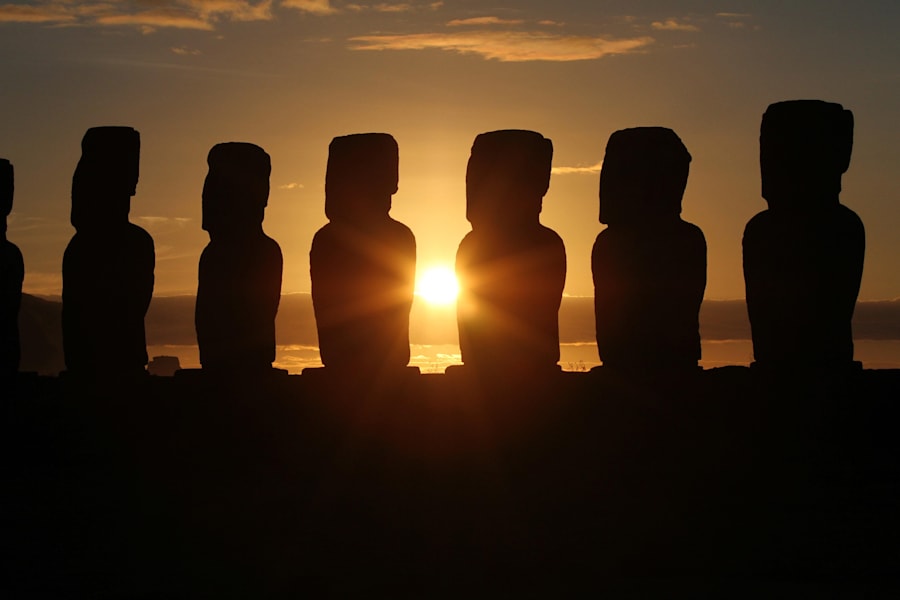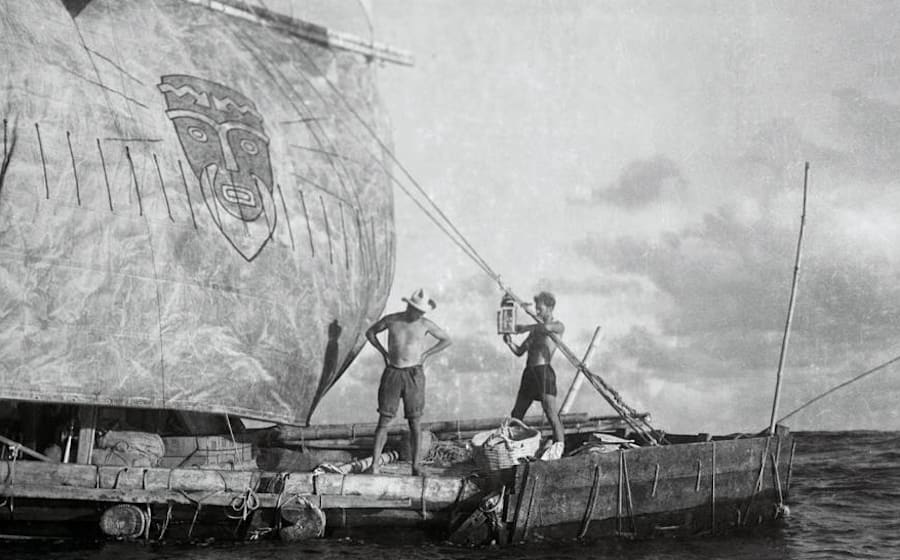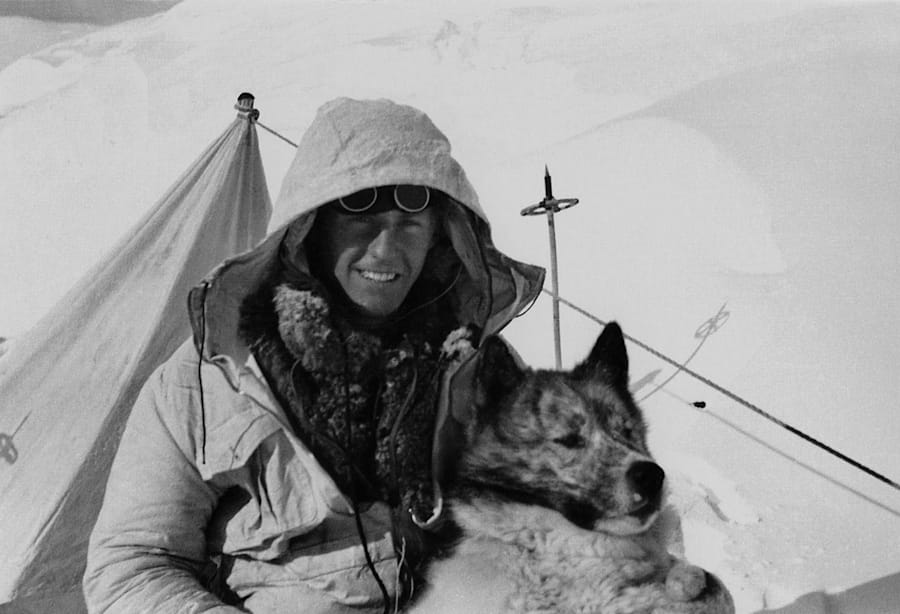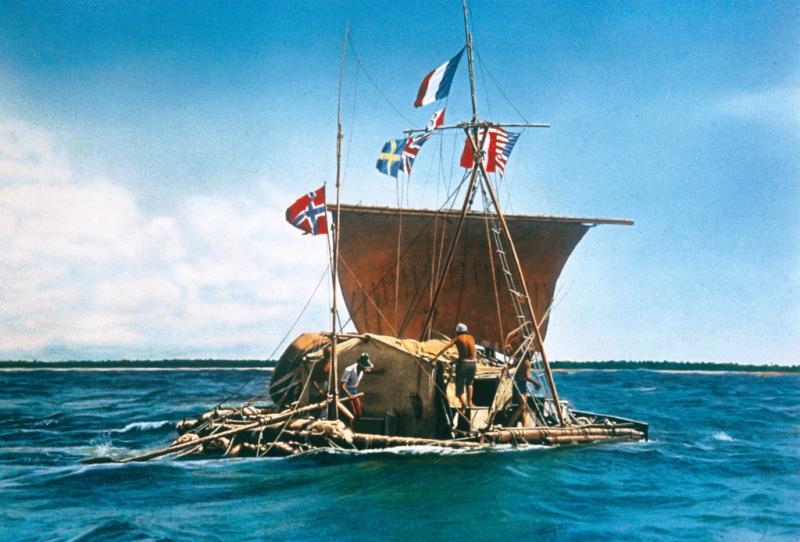Find out why an explorer drifted 6,700km on a raft just to prove a point
By: Written by Nat Kassel

Find out why an explorer drifted 6,700km on a raft just to prove a point
What's the furthest you've gone to prove you were right? Norwegian ethnographer Thor Heyerdahl went a very long way indeed on a voyage of discovery that was full of danger.

One can’t buy a ticket to paradise. You have to find it within yourself. (Thor Heyerdahl)
Balsa wood, hemp, bamboo and banana leaves

A coloured black and white photograph of Kon-Tiki © Wikimedia Commons
Surviving the ocean
Who needs steering?
Borders? I have never seen one. But I have heard they exist in the minds of some people. (Thor Heyderdahl)

So did Heyerdahl’s theory hold water?

Thor Heyerdahl camping out in the snow in Norway. © Kon-Tiki Museum
This was merely a detail for Heyerdahl, who would go on to write a best-selling book and star in an Oscar-award-winning documentary about the expedition.
Up until his death in 2002, Heyerdahl dismissed scientific criticisms, saying, “Both the wind and the people who continue to live close to nature still have much to tell us which we cannot hear within university walls.”
Heyerdahl may not have been a great scientist, but his adventure across the Pacific captured hearts and minds around the world. He was almost certainly wrong about South Americans crossing the pacific in balsa wood rafts (although in 2011, the University of Oslo’s Erik Thorsby did find clear evidence to support elements of Heyerdahl's hypothesis), but that actually makes the story all the more interesting: it means Thor and his crew were potentially the first people ever to have crossed the pacific in a traditional wooden raft.
.
No politics, no religion, no instagrams, and commentary must be civil. The ToS and the CoC will be enforced, and anything that the administrator deems to be offensive will be deleted. YouTubes, videos and images that the administrator is unable to open must be described and explained or they will be deleted.









The Kon-Tiki raft may not be considered "classic" but it sure as hell was a famous "sailboat". It captured the interest of the whole world while it was happening, a number of books have been written about it, a documentary made and a movie as well. The trailer for the movie can be seen by clicking this link ->
I have an uncle, my mother's brother, who was a unique person - he refused to "follow the fold" of ordinary people. His politics were different, his whole life was different, and for my 13th birthday he gave me two books, both about people who were outside the mold like he was, one was the story of and paintings of Vincent Van Gogh and the other was the Kon-Tiki story.
When my oldest grandson was in high school, Heyerdahl's book was required reading in his history class. He told me he thoroghly enjoyed it. Not certain, but I believe it is also required reading at Annapolis as well.
I think it's a fabulous story, and I'm impressed that it was required reading in school.
I am fortunate to live in a small semi isolated rural area of Arizona not subject to extremes in educational views found in metropolitan/urban areas elsewhere in the state and the crest of the country. Our school district lets the schools and parents both decide curriculum.
That sounds a lot better than what seems to be happing in most of America these days.
I just noticed that for some reason my computer would not accept my pasting the last paragraph of the story so I worked on it until I think it's there now. It ends with the words "a traditional wooden raft."
enjoyable reading Buzz
Thanks. When there are many stories about something I try to pick and post ones that are good reading, as I did with my article on the Saab.
In my opinion it's a tenuous theory without much supporting evidence for the concept that South Americans populated the Polynesian Islands. As the article states, "Thor and his crew were potentially [more likely probably] the first people ever to have crossed the pacific in a traditional wooden raft".
I'm surprised that it would be required reading. Elective reading is fine, but I don't see any basis for it to be required reading.
I no longer have the book, and cannot remember its contents from 70 years ago, but perhaps the teacher specifically liked the story and wanted to share it, or perhaps he wanted to expand the students' imagination and sense of adventure. It isn't science fiction, it's something real, something that a few people were capable of doing and if it had the effect of making a young person have a mind set to believe "I can do it" then as a teacher, which I was, I would do the same.
That's all fine, but the actual history of the Polynesian settlement of the Pacific covers several thousand years beginning with the first voyagers, and is much more interesting, meaningful and, in my opinion, provides a far superior educational opportunity than Heyerdahl's story.
Well, perhaps having read his story, it might provoke some to research the matter further and become as educated about it as you are.
The university walls have much to learn from the indigenous world, each day they discover that knowledge is part of nature and the world that they are just beginning to see.
You and I have discussed this topic fairly extensively before.
Although there doesn't seem to be any question that there was pre-historic/pre-European arrival contact between Polynesia and South America, I am not aware of any evidence to support the actuality of Heyerdahl's theory of drift contact. The evidence almost entirely supports that contact was occasioned by Polynesian voyagers.
The Polynesians are known to have been master navigators sailing across vast stretches of the Pacific Ocean, originating in southeast Asian and moving westward over time.
Briefly, among the other evidence supporting Polynesian origination of contact, is the use by certain South American people of the Polynesian word for sweet potato and the presence in South America of Polynesian-style war clubs originating far to the west on the Chatham Islands near New Zealand.
There is some DNA evidence of South American ancestry in Easter Islanders, but that is more probably the result of Polynesian voyagers bringing some South American people back with them after journeying to South America.
Although drift contact is possible, and may have occurred in some instances, logic supports that it would be rare and unusual, and not the basis for a large scale population transfer, because of the distance and randomness, especially considering the Polynesian's masterful navigational skills.
Given all that, everything remains theoretical. It is definitely a fascinating topic.
Yes, it is theory and we know how many theories have fallen aside as science advances and how many indigenous oral histories have been shown to be accurate.
Indeed, the Polynesians were master navigators but then again so were many of the north American tribes, and we are reminded of that today with the Alaskan/PNW tribes that travel great distances in extreme weather yet this aspect isn't given a lot of study.
Yet, it all makes a wonderful mosaic and of great interest to study.
An intriguing evidence of prehistoric trade is that for a fairly long period of ancient Egyptian history the mummies of high ranking priests and the ruling elites have high concentrations of cocaine, which was not native anywhere outside the Americas. Intriguing...
The navigational capabilities of the Alaskan/PNW tribes wouldn't have any relation to Heyerdahl's South American drift theory, unless you can think of a reason why it might.
Are you aware of any NA indigenous oral histories that make reference to people from the western hemisphere venturing to Polynesia? I've never heard of any, but it's more likely that you might have than me.
Although there is evidence for contact between indigenous Americans and Polynesians, and no denying that some indigenous Americans may have ventured into Polynesia, the west to east settlement of Polynesia originating from southeast Asia is confirmed as an accepted fact based on the overwhelming weight of the evidence from a multiplicity of sources, including but not limited to the evidence from the Lapita culture (the earliest Polynesians), DNA, linguistic evidence, evidence based on religious belief systems and indigenous Polynesian oral histories.
My claim isn't that the PNW/Alaska tribes had a relation to Heyerdhals drift theory it's that they had the skills to venture into the open ocean in some of the most dangerous waters in the world, so any sailing venture they could be well prepared for.
Even today on the outer islands of Alaska close to Russia they travel/hunt and maintain an eye on the Russians and rescue the occasional pilot that didn't make it back to the mainland.
IMO, the abilities of the indigenous and ancient people are greatly underestimated and as they have proven they have done incredible things long before the Eurocentric's put in their 2 cents worth.
It is now pretty much accepted that the 7 Waka of New Zealand colonized the country as a result of drift navigation and arrived there from Hawaii in roughly the 13th century.
According to the Maori origination story, which is basically the same throughout Polynesia with slight variations in spelling, they came from Hawaiki, which is not Hawaii. It is believed that the original inhabitants of New Zealand came from Tahiti. Hawaiki references an ancient homeland in southeast Asia, or possibly Taiwan. I've read some scholars that believe Hawaiki refers to Java. In the various Polynesian island groups the name Hawaiki became Hawai'i in the Hawai'ian islands, Havai'i in Tahiti, 'Avaiki in the Cook Island and Savai'i in Samoa. They also named islands after their ancestral homeland.
Additionally, I don't know that it is currently accepted that they arrived in New Zealand as a result merely of drift navigation. Tahiti is over 2,600 miles from New Zealand.
https://www2.hawaii.edu/~dennisk/voyaging_chiefs/discovery.html#:~:text=%2D%2DAround%20300%20B.C.%20or,discovered%20and%20settled%20Easter%20Island.
Well, facts are facts, GG, but personally I would encourage people, especially young people, to follow their dreams - somehow, I think, that is what causes great advances to be made for human society, and Thor Heyerdahl was a sterling example of a person refusing to be discouraged from doing so.
Morning G...far as I know and from history in NZ the settling of Aotearoa (NZ) was very much deliberate and not left to the wind and currents..
The Maori had massive voyaging canoes and always navigated by the stars..hence the Southern Cross on their flag as it is on ours..
You have the same understanding of the history that I do, shona. The Polynesians were highly skilled navigstors and I'm not aware of any evidence that they engaged in drift navigation. There was some mention in the comment above about the 7 Waka reaching New Zealand (I also prefer the name Aotearoa). "Waka" in the Polynesian languages means "canoe". You provided a picture of a waka. The Polynesians are not known to have drifted on rafts.
I've often wondered whether there was pre-historic contact between the Polynesians and Australia. I recently saw an article indicating there is archaeological evidence of Polynesians in Australia, which is not a surprise.
Two types of canoes were used by the NAs. The first for inland waters including the Great Lakes and made of birchbark which are still built and used today. They were the canoes that that were used by Europeans to move from the east coast of the US to the Pacific Ocean.
This is a link to a very interesting, fairly recent study based primarily on DNA testing that I just found . There is even a suggestion that upon their arrival in the Marquesas, which is in eastern Polynesia, the Polynesians may have " encountered a small, already established, Native American population".
This really proves Aristotle's famous adage: "The more you know, the more you realize you don't know."
Fascinating, isn't it? Kind of like the Cowie shell of the Ojibwe, it is only found in specific spots in the Pacific and yet in the great Hudson Bay area of Canada they have found thousands of their shells, they are sacred to the Ojibwe and no one can explain how and why there are in the Hudson Bay area. Did the Polynesian people travel to the interior of the US/Canada or did the Oibwe travel to Polynesia or did they meet somewhere in between?
Wouldn't the presence of the shells in the Ojibwe areas most likely be the result of trade among tribes throughout North America with shells passing from one tribe to another along various trade routes?
That is certainly possible but in our oral history we traveled from the Hudson Bay to the Pacific ocean and beyond.
Here is info on a recent discovery of the oldest DNA in North Aericdan, 55 generations or 17,000 years and traced to the west coast of a current living Blackfoot tribal member in Montana. The interesting thing to see is when the DNA as in SC and the Asian mix and near pure NA DNA. Currently the Blackfoot live in Montana a long way from SC and the Pacific.
It's hard to be TOO sure about anything these days.
I can think of two possible scenarios. One is that Ojibwe people, in fact, ventured to the west coast and beyond. The other is that the historical account developed around the sacradness of the shells obtained through trade. Since the oral history is that Ojibwe people acquired the shells by traveling to the source, we should give that a lot of weight.
Thanks for that link. It is really interesting.
Read the book way back in the day in my youth, fascinating story. Also read a book about Captain Horatio Hornblower, can't remember the title
Wasn't the original Hornblower novel called 'The Happy Return'?
Yes it was and was published in 1937 I believe. However it was 6th in the internal chronology of the series. A hugely popular science fiction character named Honor Harrington is largely patterend after Horatio Hornblower.